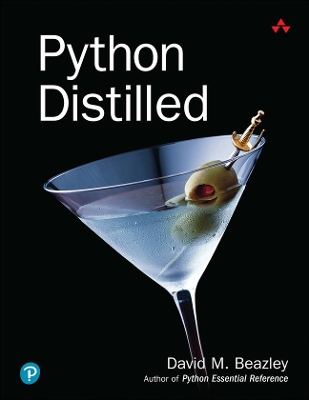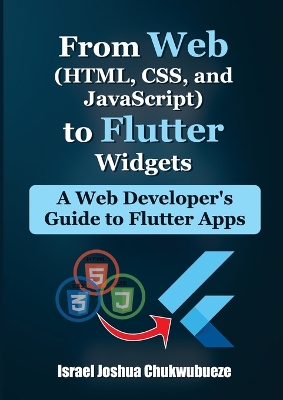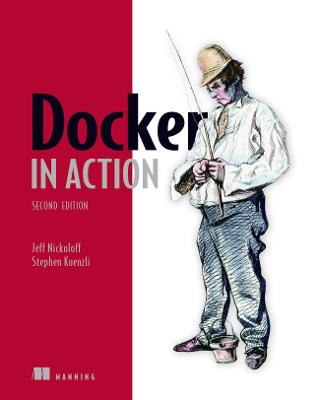Python Distilled
 portes grátis
portes grátis
Python Distilled
Beazley, David
Pearson Education (US)
11/2021
352
Mole
Inglês
9780134173276
15 a 20 dias
580
Descrição não disponível.
Preface xiii
Chapter 1: Python Basics 1
1.1 Running Python 1
1.2 Python Programs 2
1.3 Primitives, Variables, and Expressions 3
1.4 Arithmetic Operators 5
1.5 Conditionals and Control Flow 7
1.6 Text Strings 9
1.7 File Input and Output 12
1.8 Lists 13
1.9 Tuples 15
1.10 Sets 17
1.11 Dictionaries 18
1.12 Iteration and Looping 21
1.13 Functions 22
1.14 Exceptions 24
1.15 Program Termination 26
1.16 Objects and Classes 26
1.17 Modules 30
1.18 Script Writing 32
1.19 Packages 33
1.20 Structuring an Application 34
1.21 Managing Third-Party Packages 35
1.22 Python: It Fits Your Brain 36
Chapter 2: Operators, Expressions, and Data Manipulation 37
2.1 Literals 37
2.2 Expressions and Locations 38
2.3 Standard Operators 39
2.4 In-Place Assignment 41
2.5 Object Comparison 42
2.6 Ordered Comparison Operators 42
2.7 Boolean Expressions and Truth Values 43
2.8 Conditional Expressions 44
2.9 Operations Involving Iterables 45
2.10 Operations on Sequences 47
2.11 Operations on Mutable Sequences 49
2.12 Operations on Sets 50
2.13 Operations on Mappings 51
2.14 List, Set, and Dictionary Comprehensions 52
2.15 Generator Expressions 54
2.16 The Attribute (.) Operator 56
2.17 The Function Call () Operator 56
2.18 Order of Evaluation 56
2.19 Final Words: The Secret Life of Data 58
Chapter 3: Program Structure and Control Flow 59
3.1 Program Structure and Execution 59
3.2 Conditional Execution 59
3.3 Loops and Iteration 60
3.4 Exceptions 64
3.5 Context Managers and the with Statement 75
3.6 Assertions and __debug__ 77
3.7 Final Words 78
Chapter 4: Objects, Types, and Protocols 79
4.1 Essential Concepts 79
4.2 Object Identity and Type 80
4.3 Reference Counting and Garbage Collection 81
4.4 References and Copies 83
4.5 Object Representation and Printing 84
4.6 First-Class Objects 85
4.7 Using None for Optional or Missing Data 87
4.8 Object Protocols and Data Abstraction 87
4.9 Object Protocol 89
4.10 Number Protocol 90
4.11 Comparison Protocol 92
4.12 Conversion Protocols 94
4.13 Container Protocol 95
4.14 Iteration Protocol 97
4.15 Attribute Protocol 98
4.16 Function Protocol 98
4.17 Context Manager Protocol 99
4.18 Final Words: On Being Pythonic 99
Chapter 5: Functions 101
5.1 Function Definitions 101
5.2 Default Arguments 101
5.3 Variadic Arguments 102
5.4 Keyword Arguments 103
5.5 Variadic Keyword Arguments 104
5.6 Functions Accepting All Inputs 104
5.7 Positional-Only Arguments 105
5.8 Names, Documentation Strings, and Type Hints 106
5.9 Function Application and Parameter Passing 107
5.10 Return Values 109
5.11 Error Handling 110
5.12 Scoping Rules 111
5.13 Recursion 114
5.14 The lambda Expression 114
5.15 Higher-Order Functions 115
5.16 Argument Passing in Callback Functions 118
5.17 Returning Results from Callbacks 121
5.18 Decorators 124
5.19 Map, Filter, and Reduce 127
5.20 Function Introspection, Attributes, and Signatures 129
5.21 Environment Inspection 131
5.22 Dynamic Code Execution and Creation 133
5.23 Asynchronous Functions and await 135
5.24 Final Words: Thoughts on Functions and Composition 137
Chapter 6: Generators 139
6.1 Generators and yield 139
6.2 Restartable Generators 142
6.3 Generator Delegation 142
6.4 Using Generators in Practice 144
6.5 Enhanced Generators and yield Expressions 146
6.6 Applications of Enhanced Generators 148
6.7 Generators and the Bridge to Awaiting 151
6.8 Final Words: A Brief History of Generators and Looking Forward 152
Chapter 7: Classes and Object-Oriented Programming 153
7.1 Objects 153
7.2 The class Statement 154
7.3 Instances 155
7.4 Attribute Access 156
7.5 Scoping Rules 158
7.6 Operator Overloading and Protocols 159
7.7 Inheritance 160
7.8 Avoiding Inheritance via Composition 163
7.9 Avoiding Inheritance via Functions 166
7.10 Dynamic Binding and Duck Typing 167
7.11 The Danger of Inheriting from Built-in Types 167
7.12 Class Variables and Methods 169
7.13 Static Methods 173
7.14 A Word about Design Patterns 176
7.15 Data Encapsulation and Private Attributes 176
7.16 Type Hinting 179
7.17 Properties 180
7.18 Types, Interfaces, and Abstract Base Classes 183
7.19 Multiple Inheritance, Interfaces, and Mixins 187
7.20 Type-Based Dispatch 193
7.21 Class Decorators 194
7.22 Supervised Inheritance 197
7.23 The Object Life Cycle and Memory Management 199
7.24 Weak References 204
7.25 Internal Object Representation and Attribute Binding 206
7.26 Proxies, Wrappers, and Delegation 208
7.27 Reducing Memory Use with __slots__ 210
7.28 Descriptors 211
7.29 Class Definition Process 215
7.30 Dynamic Class Creation 216
7.31 Metaclasses 217
7.32 Built-in Objects for Instances and Classes 222
7.33 Final Words: Keep It Simple 223
Chapter 8: Modules and Packages 225
8.1 Modules and the import Statement 225
8.2 Module Caching 227
8.3 Importing Selected Names from a Module 228
8.4 Circular Imports 230
8.5 Module Reloading and Unloading 232
8.6 Module Compilation 233
8.7 The Module Search Path 234
8.8 Execution as the Main Program 234
8.9 Packages 235
8.10 Imports Within a Package 237
8.11 Running a Package Submodule as a Script 238
8.12 Controlling the Package Namespace 239
8.13 Controlling Package Exports 240
8.14 Package Data 241
8.15 Module Objects 242
8.16 Deploying Python Packages 243
8.17 The Penultimate Word: Start with a Package 244
8.18 The Final Word: Keep It Simple 245
Chapter 9: Input and Output 247
9.1 Data Representation 247
9.2 Text Encoding and Decoding 248
9.3 Text and Byte Formatting 250
9.4 Reading Command-Line Options 254
9.5 Environment Variables 256
9.6 Files and File Objects 256
9.7 I/O Abstraction Layers 260
9.8 Standard Input, Output, and Error 263
9.9 Directories 264
9.10 The print() function 265
9.11 Generating Output 265
9.12 Consuming Input 266
9.13 Object Serialization 268
9.14 Blocking Operations and Concurrency 269
9.15 Standard Library Modules 273
9.16 Final Words 296
Chapter 10: Built-in Functions and Standard Library 297
10.1 Built-in Functions 297
10.2 Built-in Exceptions 314
10.3 Standard Library 318
10.4 Final Words: Use the Built-Ins 320
Index 321
Chapter 1: Python Basics 1
1.1 Running Python 1
1.2 Python Programs 2
1.3 Primitives, Variables, and Expressions 3
1.4 Arithmetic Operators 5
1.5 Conditionals and Control Flow 7
1.6 Text Strings 9
1.7 File Input and Output 12
1.8 Lists 13
1.9 Tuples 15
1.10 Sets 17
1.11 Dictionaries 18
1.12 Iteration and Looping 21
1.13 Functions 22
1.14 Exceptions 24
1.15 Program Termination 26
1.16 Objects and Classes 26
1.17 Modules 30
1.18 Script Writing 32
1.19 Packages 33
1.20 Structuring an Application 34
1.21 Managing Third-Party Packages 35
1.22 Python: It Fits Your Brain 36
Chapter 2: Operators, Expressions, and Data Manipulation 37
2.1 Literals 37
2.2 Expressions and Locations 38
2.3 Standard Operators 39
2.4 In-Place Assignment 41
2.5 Object Comparison 42
2.6 Ordered Comparison Operators 42
2.7 Boolean Expressions and Truth Values 43
2.8 Conditional Expressions 44
2.9 Operations Involving Iterables 45
2.10 Operations on Sequences 47
2.11 Operations on Mutable Sequences 49
2.12 Operations on Sets 50
2.13 Operations on Mappings 51
2.14 List, Set, and Dictionary Comprehensions 52
2.15 Generator Expressions 54
2.16 The Attribute (.) Operator 56
2.17 The Function Call () Operator 56
2.18 Order of Evaluation 56
2.19 Final Words: The Secret Life of Data 58
Chapter 3: Program Structure and Control Flow 59
3.1 Program Structure and Execution 59
3.2 Conditional Execution 59
3.3 Loops and Iteration 60
3.4 Exceptions 64
3.5 Context Managers and the with Statement 75
3.6 Assertions and __debug__ 77
3.7 Final Words 78
Chapter 4: Objects, Types, and Protocols 79
4.1 Essential Concepts 79
4.2 Object Identity and Type 80
4.3 Reference Counting and Garbage Collection 81
4.4 References and Copies 83
4.5 Object Representation and Printing 84
4.6 First-Class Objects 85
4.7 Using None for Optional or Missing Data 87
4.8 Object Protocols and Data Abstraction 87
4.9 Object Protocol 89
4.10 Number Protocol 90
4.11 Comparison Protocol 92
4.12 Conversion Protocols 94
4.13 Container Protocol 95
4.14 Iteration Protocol 97
4.15 Attribute Protocol 98
4.16 Function Protocol 98
4.17 Context Manager Protocol 99
4.18 Final Words: On Being Pythonic 99
Chapter 5: Functions 101
5.1 Function Definitions 101
5.2 Default Arguments 101
5.3 Variadic Arguments 102
5.4 Keyword Arguments 103
5.5 Variadic Keyword Arguments 104
5.6 Functions Accepting All Inputs 104
5.7 Positional-Only Arguments 105
5.8 Names, Documentation Strings, and Type Hints 106
5.9 Function Application and Parameter Passing 107
5.10 Return Values 109
5.11 Error Handling 110
5.12 Scoping Rules 111
5.13 Recursion 114
5.14 The lambda Expression 114
5.15 Higher-Order Functions 115
5.16 Argument Passing in Callback Functions 118
5.17 Returning Results from Callbacks 121
5.18 Decorators 124
5.19 Map, Filter, and Reduce 127
5.20 Function Introspection, Attributes, and Signatures 129
5.21 Environment Inspection 131
5.22 Dynamic Code Execution and Creation 133
5.23 Asynchronous Functions and await 135
5.24 Final Words: Thoughts on Functions and Composition 137
Chapter 6: Generators 139
6.1 Generators and yield 139
6.2 Restartable Generators 142
6.3 Generator Delegation 142
6.4 Using Generators in Practice 144
6.5 Enhanced Generators and yield Expressions 146
6.6 Applications of Enhanced Generators 148
6.7 Generators and the Bridge to Awaiting 151
6.8 Final Words: A Brief History of Generators and Looking Forward 152
Chapter 7: Classes and Object-Oriented Programming 153
7.1 Objects 153
7.2 The class Statement 154
7.3 Instances 155
7.4 Attribute Access 156
7.5 Scoping Rules 158
7.6 Operator Overloading and Protocols 159
7.7 Inheritance 160
7.8 Avoiding Inheritance via Composition 163
7.9 Avoiding Inheritance via Functions 166
7.10 Dynamic Binding and Duck Typing 167
7.11 The Danger of Inheriting from Built-in Types 167
7.12 Class Variables and Methods 169
7.13 Static Methods 173
7.14 A Word about Design Patterns 176
7.15 Data Encapsulation and Private Attributes 176
7.16 Type Hinting 179
7.17 Properties 180
7.18 Types, Interfaces, and Abstract Base Classes 183
7.19 Multiple Inheritance, Interfaces, and Mixins 187
7.20 Type-Based Dispatch 193
7.21 Class Decorators 194
7.22 Supervised Inheritance 197
7.23 The Object Life Cycle and Memory Management 199
7.24 Weak References 204
7.25 Internal Object Representation and Attribute Binding 206
7.26 Proxies, Wrappers, and Delegation 208
7.27 Reducing Memory Use with __slots__ 210
7.28 Descriptors 211
7.29 Class Definition Process 215
7.30 Dynamic Class Creation 216
7.31 Metaclasses 217
7.32 Built-in Objects for Instances and Classes 222
7.33 Final Words: Keep It Simple 223
Chapter 8: Modules and Packages 225
8.1 Modules and the import Statement 225
8.2 Module Caching 227
8.3 Importing Selected Names from a Module 228
8.4 Circular Imports 230
8.5 Module Reloading and Unloading 232
8.6 Module Compilation 233
8.7 The Module Search Path 234
8.8 Execution as the Main Program 234
8.9 Packages 235
8.10 Imports Within a Package 237
8.11 Running a Package Submodule as a Script 238
8.12 Controlling the Package Namespace 239
8.13 Controlling Package Exports 240
8.14 Package Data 241
8.15 Module Objects 242
8.16 Deploying Python Packages 243
8.17 The Penultimate Word: Start with a Package 244
8.18 The Final Word: Keep It Simple 245
Chapter 9: Input and Output 247
9.1 Data Representation 247
9.2 Text Encoding and Decoding 248
9.3 Text and Byte Formatting 250
9.4 Reading Command-Line Options 254
9.5 Environment Variables 256
9.6 Files and File Objects 256
9.7 I/O Abstraction Layers 260
9.8 Standard Input, Output, and Error 263
9.9 Directories 264
9.10 The print() function 265
9.11 Generating Output 265
9.12 Consuming Input 266
9.13 Object Serialization 268
9.14 Blocking Operations and Concurrency 269
9.15 Standard Library Modules 273
9.16 Final Words 296
Chapter 10: Built-in Functions and Standard Library 297
10.1 Built-in Functions 297
10.2 Built-in Exceptions 314
10.3 Standard Library 318
10.4 Final Words: Use the Built-Ins 320
Index 321
Este título pertence ao(s) assunto(s) indicados(s). Para ver outros títulos clique no assunto desejado.
Preface xiii
Chapter 1: Python Basics 1
1.1 Running Python 1
1.2 Python Programs 2
1.3 Primitives, Variables, and Expressions 3
1.4 Arithmetic Operators 5
1.5 Conditionals and Control Flow 7
1.6 Text Strings 9
1.7 File Input and Output 12
1.8 Lists 13
1.9 Tuples 15
1.10 Sets 17
1.11 Dictionaries 18
1.12 Iteration and Looping 21
1.13 Functions 22
1.14 Exceptions 24
1.15 Program Termination 26
1.16 Objects and Classes 26
1.17 Modules 30
1.18 Script Writing 32
1.19 Packages 33
1.20 Structuring an Application 34
1.21 Managing Third-Party Packages 35
1.22 Python: It Fits Your Brain 36
Chapter 2: Operators, Expressions, and Data Manipulation 37
2.1 Literals 37
2.2 Expressions and Locations 38
2.3 Standard Operators 39
2.4 In-Place Assignment 41
2.5 Object Comparison 42
2.6 Ordered Comparison Operators 42
2.7 Boolean Expressions and Truth Values 43
2.8 Conditional Expressions 44
2.9 Operations Involving Iterables 45
2.10 Operations on Sequences 47
2.11 Operations on Mutable Sequences 49
2.12 Operations on Sets 50
2.13 Operations on Mappings 51
2.14 List, Set, and Dictionary Comprehensions 52
2.15 Generator Expressions 54
2.16 The Attribute (.) Operator 56
2.17 The Function Call () Operator 56
2.18 Order of Evaluation 56
2.19 Final Words: The Secret Life of Data 58
Chapter 3: Program Structure and Control Flow 59
3.1 Program Structure and Execution 59
3.2 Conditional Execution 59
3.3 Loops and Iteration 60
3.4 Exceptions 64
3.5 Context Managers and the with Statement 75
3.6 Assertions and __debug__ 77
3.7 Final Words 78
Chapter 4: Objects, Types, and Protocols 79
4.1 Essential Concepts 79
4.2 Object Identity and Type 80
4.3 Reference Counting and Garbage Collection 81
4.4 References and Copies 83
4.5 Object Representation and Printing 84
4.6 First-Class Objects 85
4.7 Using None for Optional or Missing Data 87
4.8 Object Protocols and Data Abstraction 87
4.9 Object Protocol 89
4.10 Number Protocol 90
4.11 Comparison Protocol 92
4.12 Conversion Protocols 94
4.13 Container Protocol 95
4.14 Iteration Protocol 97
4.15 Attribute Protocol 98
4.16 Function Protocol 98
4.17 Context Manager Protocol 99
4.18 Final Words: On Being Pythonic 99
Chapter 5: Functions 101
5.1 Function Definitions 101
5.2 Default Arguments 101
5.3 Variadic Arguments 102
5.4 Keyword Arguments 103
5.5 Variadic Keyword Arguments 104
5.6 Functions Accepting All Inputs 104
5.7 Positional-Only Arguments 105
5.8 Names, Documentation Strings, and Type Hints 106
5.9 Function Application and Parameter Passing 107
5.10 Return Values 109
5.11 Error Handling 110
5.12 Scoping Rules 111
5.13 Recursion 114
5.14 The lambda Expression 114
5.15 Higher-Order Functions 115
5.16 Argument Passing in Callback Functions 118
5.17 Returning Results from Callbacks 121
5.18 Decorators 124
5.19 Map, Filter, and Reduce 127
5.20 Function Introspection, Attributes, and Signatures 129
5.21 Environment Inspection 131
5.22 Dynamic Code Execution and Creation 133
5.23 Asynchronous Functions and await 135
5.24 Final Words: Thoughts on Functions and Composition 137
Chapter 6: Generators 139
6.1 Generators and yield 139
6.2 Restartable Generators 142
6.3 Generator Delegation 142
6.4 Using Generators in Practice 144
6.5 Enhanced Generators and yield Expressions 146
6.6 Applications of Enhanced Generators 148
6.7 Generators and the Bridge to Awaiting 151
6.8 Final Words: A Brief History of Generators and Looking Forward 152
Chapter 7: Classes and Object-Oriented Programming 153
7.1 Objects 153
7.2 The class Statement 154
7.3 Instances 155
7.4 Attribute Access 156
7.5 Scoping Rules 158
7.6 Operator Overloading and Protocols 159
7.7 Inheritance 160
7.8 Avoiding Inheritance via Composition 163
7.9 Avoiding Inheritance via Functions 166
7.10 Dynamic Binding and Duck Typing 167
7.11 The Danger of Inheriting from Built-in Types 167
7.12 Class Variables and Methods 169
7.13 Static Methods 173
7.14 A Word about Design Patterns 176
7.15 Data Encapsulation and Private Attributes 176
7.16 Type Hinting 179
7.17 Properties 180
7.18 Types, Interfaces, and Abstract Base Classes 183
7.19 Multiple Inheritance, Interfaces, and Mixins 187
7.20 Type-Based Dispatch 193
7.21 Class Decorators 194
7.22 Supervised Inheritance 197
7.23 The Object Life Cycle and Memory Management 199
7.24 Weak References 204
7.25 Internal Object Representation and Attribute Binding 206
7.26 Proxies, Wrappers, and Delegation 208
7.27 Reducing Memory Use with __slots__ 210
7.28 Descriptors 211
7.29 Class Definition Process 215
7.30 Dynamic Class Creation 216
7.31 Metaclasses 217
7.32 Built-in Objects for Instances and Classes 222
7.33 Final Words: Keep It Simple 223
Chapter 8: Modules and Packages 225
8.1 Modules and the import Statement 225
8.2 Module Caching 227
8.3 Importing Selected Names from a Module 228
8.4 Circular Imports 230
8.5 Module Reloading and Unloading 232
8.6 Module Compilation 233
8.7 The Module Search Path 234
8.8 Execution as the Main Program 234
8.9 Packages 235
8.10 Imports Within a Package 237
8.11 Running a Package Submodule as a Script 238
8.12 Controlling the Package Namespace 239
8.13 Controlling Package Exports 240
8.14 Package Data 241
8.15 Module Objects 242
8.16 Deploying Python Packages 243
8.17 The Penultimate Word: Start with a Package 244
8.18 The Final Word: Keep It Simple 245
Chapter 9: Input and Output 247
9.1 Data Representation 247
9.2 Text Encoding and Decoding 248
9.3 Text and Byte Formatting 250
9.4 Reading Command-Line Options 254
9.5 Environment Variables 256
9.6 Files and File Objects 256
9.7 I/O Abstraction Layers 260
9.8 Standard Input, Output, and Error 263
9.9 Directories 264
9.10 The print() function 265
9.11 Generating Output 265
9.12 Consuming Input 266
9.13 Object Serialization 268
9.14 Blocking Operations and Concurrency 269
9.15 Standard Library Modules 273
9.16 Final Words 296
Chapter 10: Built-in Functions and Standard Library 297
10.1 Built-in Functions 297
10.2 Built-in Exceptions 314
10.3 Standard Library 318
10.4 Final Words: Use the Built-Ins 320
Index 321
Chapter 1: Python Basics 1
1.1 Running Python 1
1.2 Python Programs 2
1.3 Primitives, Variables, and Expressions 3
1.4 Arithmetic Operators 5
1.5 Conditionals and Control Flow 7
1.6 Text Strings 9
1.7 File Input and Output 12
1.8 Lists 13
1.9 Tuples 15
1.10 Sets 17
1.11 Dictionaries 18
1.12 Iteration and Looping 21
1.13 Functions 22
1.14 Exceptions 24
1.15 Program Termination 26
1.16 Objects and Classes 26
1.17 Modules 30
1.18 Script Writing 32
1.19 Packages 33
1.20 Structuring an Application 34
1.21 Managing Third-Party Packages 35
1.22 Python: It Fits Your Brain 36
Chapter 2: Operators, Expressions, and Data Manipulation 37
2.1 Literals 37
2.2 Expressions and Locations 38
2.3 Standard Operators 39
2.4 In-Place Assignment 41
2.5 Object Comparison 42
2.6 Ordered Comparison Operators 42
2.7 Boolean Expressions and Truth Values 43
2.8 Conditional Expressions 44
2.9 Operations Involving Iterables 45
2.10 Operations on Sequences 47
2.11 Operations on Mutable Sequences 49
2.12 Operations on Sets 50
2.13 Operations on Mappings 51
2.14 List, Set, and Dictionary Comprehensions 52
2.15 Generator Expressions 54
2.16 The Attribute (.) Operator 56
2.17 The Function Call () Operator 56
2.18 Order of Evaluation 56
2.19 Final Words: The Secret Life of Data 58
Chapter 3: Program Structure and Control Flow 59
3.1 Program Structure and Execution 59
3.2 Conditional Execution 59
3.3 Loops and Iteration 60
3.4 Exceptions 64
3.5 Context Managers and the with Statement 75
3.6 Assertions and __debug__ 77
3.7 Final Words 78
Chapter 4: Objects, Types, and Protocols 79
4.1 Essential Concepts 79
4.2 Object Identity and Type 80
4.3 Reference Counting and Garbage Collection 81
4.4 References and Copies 83
4.5 Object Representation and Printing 84
4.6 First-Class Objects 85
4.7 Using None for Optional or Missing Data 87
4.8 Object Protocols and Data Abstraction 87
4.9 Object Protocol 89
4.10 Number Protocol 90
4.11 Comparison Protocol 92
4.12 Conversion Protocols 94
4.13 Container Protocol 95
4.14 Iteration Protocol 97
4.15 Attribute Protocol 98
4.16 Function Protocol 98
4.17 Context Manager Protocol 99
4.18 Final Words: On Being Pythonic 99
Chapter 5: Functions 101
5.1 Function Definitions 101
5.2 Default Arguments 101
5.3 Variadic Arguments 102
5.4 Keyword Arguments 103
5.5 Variadic Keyword Arguments 104
5.6 Functions Accepting All Inputs 104
5.7 Positional-Only Arguments 105
5.8 Names, Documentation Strings, and Type Hints 106
5.9 Function Application and Parameter Passing 107
5.10 Return Values 109
5.11 Error Handling 110
5.12 Scoping Rules 111
5.13 Recursion 114
5.14 The lambda Expression 114
5.15 Higher-Order Functions 115
5.16 Argument Passing in Callback Functions 118
5.17 Returning Results from Callbacks 121
5.18 Decorators 124
5.19 Map, Filter, and Reduce 127
5.20 Function Introspection, Attributes, and Signatures 129
5.21 Environment Inspection 131
5.22 Dynamic Code Execution and Creation 133
5.23 Asynchronous Functions and await 135
5.24 Final Words: Thoughts on Functions and Composition 137
Chapter 6: Generators 139
6.1 Generators and yield 139
6.2 Restartable Generators 142
6.3 Generator Delegation 142
6.4 Using Generators in Practice 144
6.5 Enhanced Generators and yield Expressions 146
6.6 Applications of Enhanced Generators 148
6.7 Generators and the Bridge to Awaiting 151
6.8 Final Words: A Brief History of Generators and Looking Forward 152
Chapter 7: Classes and Object-Oriented Programming 153
7.1 Objects 153
7.2 The class Statement 154
7.3 Instances 155
7.4 Attribute Access 156
7.5 Scoping Rules 158
7.6 Operator Overloading and Protocols 159
7.7 Inheritance 160
7.8 Avoiding Inheritance via Composition 163
7.9 Avoiding Inheritance via Functions 166
7.10 Dynamic Binding and Duck Typing 167
7.11 The Danger of Inheriting from Built-in Types 167
7.12 Class Variables and Methods 169
7.13 Static Methods 173
7.14 A Word about Design Patterns 176
7.15 Data Encapsulation and Private Attributes 176
7.16 Type Hinting 179
7.17 Properties 180
7.18 Types, Interfaces, and Abstract Base Classes 183
7.19 Multiple Inheritance, Interfaces, and Mixins 187
7.20 Type-Based Dispatch 193
7.21 Class Decorators 194
7.22 Supervised Inheritance 197
7.23 The Object Life Cycle and Memory Management 199
7.24 Weak References 204
7.25 Internal Object Representation and Attribute Binding 206
7.26 Proxies, Wrappers, and Delegation 208
7.27 Reducing Memory Use with __slots__ 210
7.28 Descriptors 211
7.29 Class Definition Process 215
7.30 Dynamic Class Creation 216
7.31 Metaclasses 217
7.32 Built-in Objects for Instances and Classes 222
7.33 Final Words: Keep It Simple 223
Chapter 8: Modules and Packages 225
8.1 Modules and the import Statement 225
8.2 Module Caching 227
8.3 Importing Selected Names from a Module 228
8.4 Circular Imports 230
8.5 Module Reloading and Unloading 232
8.6 Module Compilation 233
8.7 The Module Search Path 234
8.8 Execution as the Main Program 234
8.9 Packages 235
8.10 Imports Within a Package 237
8.11 Running a Package Submodule as a Script 238
8.12 Controlling the Package Namespace 239
8.13 Controlling Package Exports 240
8.14 Package Data 241
8.15 Module Objects 242
8.16 Deploying Python Packages 243
8.17 The Penultimate Word: Start with a Package 244
8.18 The Final Word: Keep It Simple 245
Chapter 9: Input and Output 247
9.1 Data Representation 247
9.2 Text Encoding and Decoding 248
9.3 Text and Byte Formatting 250
9.4 Reading Command-Line Options 254
9.5 Environment Variables 256
9.6 Files and File Objects 256
9.7 I/O Abstraction Layers 260
9.8 Standard Input, Output, and Error 263
9.9 Directories 264
9.10 The print() function 265
9.11 Generating Output 265
9.12 Consuming Input 266
9.13 Object Serialization 268
9.14 Blocking Operations and Concurrency 269
9.15 Standard Library Modules 273
9.16 Final Words 296
Chapter 10: Built-in Functions and Standard Library 297
10.1 Built-in Functions 297
10.2 Built-in Exceptions 314
10.3 Standard Library 318
10.4 Final Words: Use the Built-Ins 320
Index 321
Este título pertence ao(s) assunto(s) indicados(s). Para ver outros títulos clique no assunto desejado.







